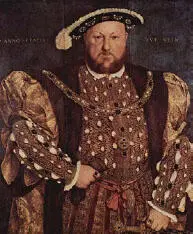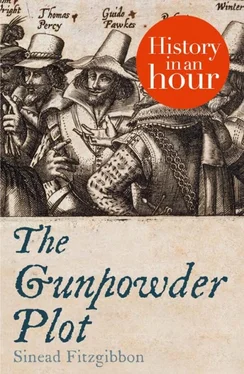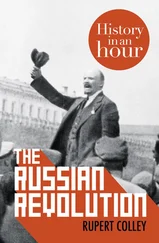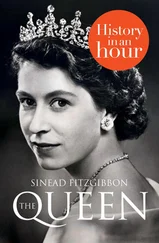THE GUNPOWDER PLOT
History in an Hour
Sinead Fitzgibbon
About History in an Hour About History in an Hour Introduction A Country Divided The Conspirators The Hatching of a Plot The Discovery An Attempt to Escape Torture and Capture Trial and Execution Repercussions, Traditions and Legacy Appendix 1: Key Players Appendix 2: The Gunpowder Plot Timeline Copyright Got Another Hour? About the Publisher
History in an Hour is a series of ebooks to help the reader learn the basic facts of a given subject area. Everything you need to know is presented in a straightforward narrative and in chronological order. No embedded links to divert your attention, nor a daunting book of 600 pages with a 35-page introduction. Just straight in, to the point, sixty minutes, done. Then, having absorbed the basics, you may feel inspired to explore further.
Give yourself sixty minutes and see what you can learn …
To find out more visit http://historyinanhour.com or follow us on Twitter: http://twitter.com/historyinanhour
Contents
Title Page THE GUNPOWDER PLOT History in an Hour Sinead Fitzgibbon
About History in an Hour About History in an Hour About History in an Hour Introduction A Country Divided The Conspirators The Hatching of a Plot The Discovery An Attempt to Escape Torture and Capture Trial and Execution Repercussions, Traditions and Legacy Appendix 1: Key Players Appendix 2: The Gunpowder Plot Timeline Copyright Got Another Hour? About the Publisher History in an Hour is a series of ebooks to help the reader learn the basic facts of a given subject area. Everything you need to know is presented in a straightforward narrative and in chronological order. No embedded links to divert your attention, nor a daunting book of 600 pages with a 35-page introduction. Just straight in, to the point, sixty minutes, done. Then, having absorbed the basics, you may feel inspired to explore further. Give yourself sixty minutes and see what you can learn … To find out more visit http://historyinanhour.com or follow us on Twitter: http://twitter.com/historyinanhour
Introduction Introduction Remember, remember, the fifth of November, Gunpowder, Treason and Plot. I see no reason why Gunpowder Treason Should ever be forgot. Like all good conspiracy stories, the tale of the Gunpowder Plot of 1605 is one that combines elements of mystery, intrigue, suspense and, of course, deception. It is the story of a small band of disaffected Catholics who, unhappy with the constraints placed on their religion by Elizabeth I and her successor, James I, decided to challenge the religious and political status quo. They would do this by committing the ultimate act of terrorism – the destruction of both king and Parliament. The plan was audacious and surprisingly simple – and came very close to succeeding. There have been innumerable terrorist conspiracies, both successful and otherwise, down through the ages, but the Gunpowder Plot has succeeded in capturing our imagination unlike any other. Over 400 years has passed since this daring scheme was discovered, and yet its legend continues undiminished. Every year, bonfires are lit the length and breadth of Britain to mark the Plot’s anniversary, a tradition which dates back to that fateful November night in 1605 when the Gunpowder Plot was uncovered at the eleventh hour. This, in an hour, is the story of the Gunpowder Plot.
A Country Divided
The Conspirators
The Hatching of a Plot
The Discovery
An Attempt to Escape
Torture and Capture
Trial and Execution
Repercussions, Traditions and Legacy
Appendix 1: Key Players
Appendix 2: The Gunpowder Plot Timeline
Copyright
Got Another Hour?
About the Publisher
Introduction
Remember, remember, the fifth of November,
Gunpowder, Treason and Plot.
I see no reason why Gunpowder Treason
Should ever be forgot.
Like all good conspiracy stories, the tale of the Gunpowder Plot of 1605 is one that combines elements of mystery, intrigue, suspense and, of course, deception. It is the story of a small band of disaffected Catholics who, unhappy with the constraints placed on their religion by Elizabeth I and her successor, James I, decided to challenge the religious and political status quo. They would do this by committing the ultimate act of terrorism – the destruction of both king and Parliament. The plan was audacious and surprisingly simple – and came very close to succeeding. There have been innumerable terrorist conspiracies, both successful and otherwise, down through the ages, but the Gunpowder Plot has succeeded in capturing our imagination unlike any other. Over 400 years has passed since this daring scheme was discovered, and yet its legend continues undiminished. Every year, bonfires are lit the length and breadth of Britain to mark the Plot’s anniversary, a tradition which dates back to that fateful November night in 1605 when the Gunpowder Plot was uncovered at the eleventh hour.
This, in an hour, is the story of the Gunpowder Plot.
A Country Divided
England at the turn of the seventeenth century was a country rife with political tensions and religious divisions, the roots of which can be traced back some seventy years to the reign of Henry VIII. The actions of this one man would have profound repercussions for his kingdom, condemning his people to decades of religious conflicts and persecution. The discord which resulted from Henry’s exploits would in turn give rise to one of the most audacious terrorist plots this country has ever seen – the Gunpowder Plot.
Henry VIII
During the early 1530s, Henry, in his desperation to marry Anne Boleyn, was frantically looking for a way to divorce his wife of almost twenty-five years, Catherine of Aragon. When numerous appeals to Rome for an annulment fell on deaf ears, Henry’s patience began to wear thin. Powerless in the face of the Pope’s authority, Henry grew increasingly resentful. Until this point, Henry had been a dutiful and pious Catholic. Despite this, relations between the English monarch’s court and Rome were invariably strained. Henry, accustomed to being in an authoritative position, often found it difficult to bend to the will of the Papacy. Ever the opportunist, the King’s attentions soon turned to the Protestant Reformation which at the time was sweeping the Continent.

Henry VIII
Recognising in this movement a chance to circumvent the authority of Rome, Henry began to endorse the Reformation’s ideals. Thus began a concerted campaign to wrest power from the Papacy. Denouncing the Catholic Church as corrupt and out of touch, Henry broke all ties with Rome in 1533. In doing so, he proclaimed himself, and not the Pope, to be the Supreme Head of the Church in England; the King was now bound only by his conscience in matters of religion and theology. Conveniently, his conscience proved to be no obstacle to his divorce from Catherine.
So began a marital merry-go-round which would last for more than a decade. Proving himself to be a fickle husband and obsessed with producing the necessary male heir, Henry would marry six times. These marriages would end by a variety of means: divorce, death or execution. They would, however, produce three children: Mary from his marriage to Catherine of Aragon; Elizabeth from his union with Anne Boleyn; and the longed-for son, Edward, from his third marriage to Jane Seymour. Henry’s offspring would each play a significant part in inflaming the religious tensions which were first ignited by their father.
Читать дальше













